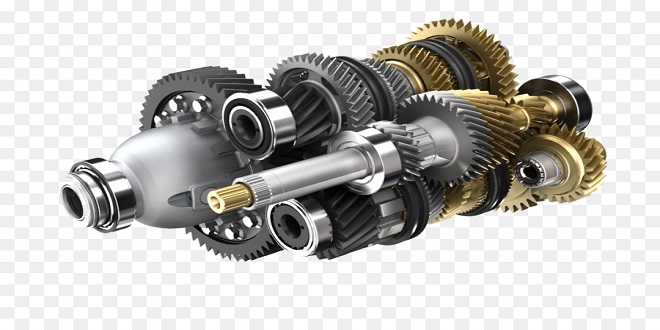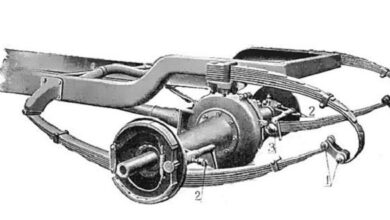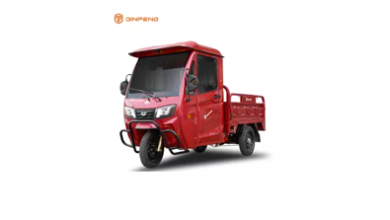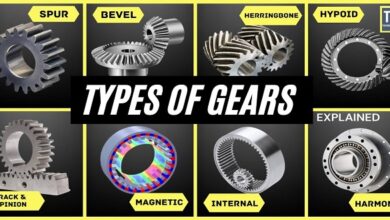Drive configuration and arrangements

The general drive configuration of a vehicle usually depends on its expected function and purpose. The engine produces power to move the vehicle along the road surface. This power is transmitted via a transmission system incorporating a gearbox and final drive assembly. The majority of light vehicles have four wheels, although there are a few three-wheeled vehicles still seen on the roads today. The drive configuration layouts therefore either two- or four-wheel drive.
Three-wheeled vehicles usually transmit the power from the engine to the rear wheels via a final drive in the rear axle. There are, however, some smaller-engined three-wheel vehicles that situate the engine over the front steered wheel and pass the drive directly to this wheel. Some independent manufacturers producing higher-powered three-wheeled vehicles utilize a drive arrangement with a single wheel at the rear and two wheels at the front. The rear wheel is often driven by a powerful motorcycle engine via a chain or propeller shaft.
Manufacturers’ choice of drive arrangement is normally dependent on the market and purpose of the vehicle. Each type of drive arrangement from front-wheel drive to four-wheel drive has advantages and disadvantages, which are taken into consideration by the vehicle designers when producing new vehicle types.
Rear-wheel drive
This was where the rear wheels acted as the driving wheels and the front wheels swiveled to allow the car to be steered. Locating the main vehicle drive components and engine units in this way provided the technician with improved accessibility, but also impacted on the passenger space through the installation of a transmission tunnel to locate the propeller shaft down the length of the passenger compartment. Rear-wheel drive provides good traction in dry and fi rm-grip conditions.
However, on loose surfaces and under acceleration in wet conditions, rear-wheel-drive vehicles tend to snake and lose grip, causing the rear of the car to move sideways requiring continual correction of the front (steering) wheels if a straight path is to be maintained.
Front-wheel drive
The benefits of having a more compact arrangement have made the front-wheel-drive layout a popular choice for manufacturers. The demand for smaller cars has increased as quickly as the demand for more economical vehicles; this has pushed manufacturers into producing more compact designs, which usually incorporate front-wheel drive. Accommodating all the major components under the bonnet has allowed more space in the vehicle for the occupants and removed the need for a transmission tunnel.
Four-wheel drive
Four-wheel drive has long been associated with all-terrain and off-road vehicles but is increasingly being fitted to normal road-going vehicles. Four-wheel drive is safer because it transmits drive to all four wheels and, therefore, reduces wheel spin or loss of traction, especially in wet, muddy or icy conditions. Additionally, the positive drive to all four wheels assists in the braking of the vehicle, especially when using the transmission to slow the vehicle down as all four wheels will create traction when the vehicle decelerates.
Last word
Although these systems are rarely used today in their original form, they are included here to show the arrangements used to resist the various forces associated with the propulsion of a vehicle. This knowledge should help in the diagnosis of many of the ‘knock, clonk, and vibration’ faults associated with drive systems.




